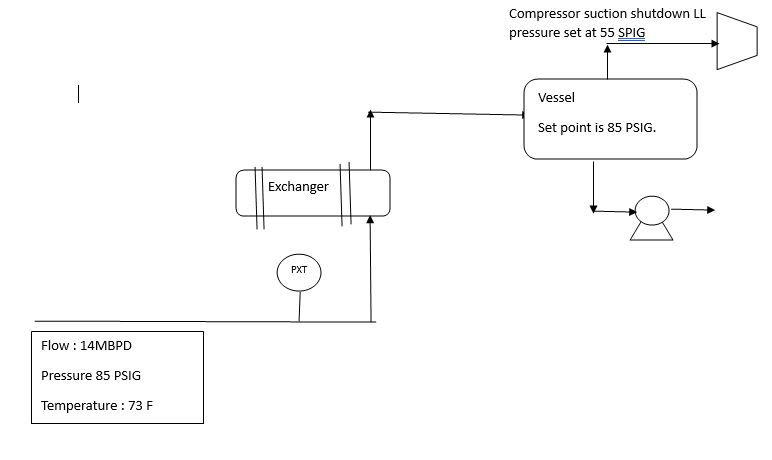Assuming that you do not have other criteria, such as a pump NPSHL requirement or similar limitations ... its just the pipe and flow rate control you are trying to ensure ...
It is generally advisable to not let your pipeline go back and forth between liquid and gas phases, due to pressure shock, vapor lock potential and maintaining flow control at liquid rates and not possibly damaging meters and vapor locking instruments, trying to pump gas with a liquid phase pump or avoiding conditions where non liquid flow might adversely affect your system, so presumably you will want to keep it in the liquid phase.
So, unless you want to fill your system with gas bubbles, or gas pockets and enter 2 phase flow, you should set the LL to a pressure that will maintain your condensate in the liquid phase. In other words, the pressure at the lowest point in your system must be kept above the condensate's vapor pressure or bubble point. Then from the low point, work out what the corresponding pressure at the PSLL location must be (while at the highest temperature) and set the PSLL accordingly.
--Einstein gave the same test to students every year. When asked why he would do something like that, "Because the answers had changed."

![[cheers] [cheers] [cheers]](/data/assets/smilies/cheers.gif) and Season's Greetings
and Season's Greetings ![[santa] [santa] [santa]](/data/assets/smilies/santa.gif) to one and all.
to one and all. ![[reindeer2] [reindeer2] [reindeer2]](/data/assets/smilies/reindeer2.gif)
![[frosty] [frosty] [frosty]](/data/assets/smilies/frosty.gif)
![[reindeer] [reindeer] [reindeer]](/data/assets/smilies/reindeer.gif)
